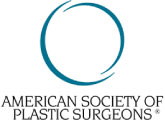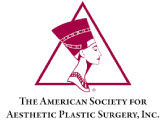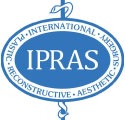Over time gravity and the reduction of collagen production in the skin allows the forehead to move downwards. The heavy, hooded look of drooping brow skin can make you look harsh and tired. A brow lift involves the excision of the excess skin and fat, raising drooping eyelids and a reduction of frown lines, giving you a brighter, friendlier appearance.

Consultation
Dr. Arianayagam will ask you a variety of questions about your current health situation, medications, allergies and any past medical treatments. He will carefully examine and assess your brow, looking at the degree of elevation and the activity of the brow muscles.
Based on his examination, your history and personal goals he will discuss the options available and his recommendations.
Ideally, a second consultation is had a week or two later to give you the opportunity to come back with more questions and to confirm your decision.

Procedure
The exact surgical technique used will depend on many factors, including the position of your eyebrows, amount of excess upper eyelid skin and the height of your hairline.
The two most common procedures are the classic brow lift and the endoscopic lift. With a classic lift an incision is made along the hairline. Excess skin and redundant muscle is removed and the skin of the forehead is redraped upwards. An endoscopic lift involves 4-5 short incisions above the hairline. The connected endoscope allows the doctor to see beneath the skin during the procedure.
In your initial consultation Dr. Arianayagam will discuss in detail the specific procedure recommended for you.
All procedures are performed under general anaesthesia at Coffs Harbour Day Surgery or Baringa Private Hospital. The procedure takes up to 2 hours and is generally done as a day procedure, and you will be able to go home the same day.

Recovery
You should expect some bruising and swelling immediately after surgery. The worst of the swelling generally clears in the first 72 hours, but it can take 3-6 months for things to completely settle.
Usually a dressing is applied immediately after surgery and remains in place for at least 2 days. Most patients feel comfortable returning to work after about 2 weeks. You should refrain from strenuous exercise for 4 weeks.
Frequently Asked Questions
Any surgery will leave scars. However, incisions are generally made within the hairline so they can be camouflaged. It is possible that scars will be visible if the hair is parted in a certain way. You should discuss this with the doctor during your initial consultation.
As with all surgical procedures, there will always be risks such as post-operative bleeding, allergic reactions, infection, deep vein thrombosis and haematoma.
There are also some risks and complications that are specific to a brow lift.
Altered facial sensation
Numbness after any surgery is common. This should be expected to last for several weeks or months following the procedure and can take as long as 2 years to resolve.
Hairline alteration
Depending on the type of brow lift, it is possible that your hairline will be altered. Be sure to discuss this in your consultation when considering which procedure is most suitable for you.
Facial asymmetry
Very occasionally a brow lift may result in facial asymmetry. It is important not to be alarmed since it can take months for the results of your surgery to settle. However, if asymmetry remains a problem it is possible to address this with corrective surgery.
Scalp itching
Sometimes the forehead can become itchy after a brow lift, due to a subtle nerve dysfunction caused by the stretching of the skin. This almost always subsides with time.
Hair loss
Although relatively uncommon, patients sometimes suffer alopecia (hair loss) following a brow lift.
Facial nerve damage
Occasionally a brow lift can result in temporary damage to the facial nerves. Usually this will resolve itself in 6-12 months.






